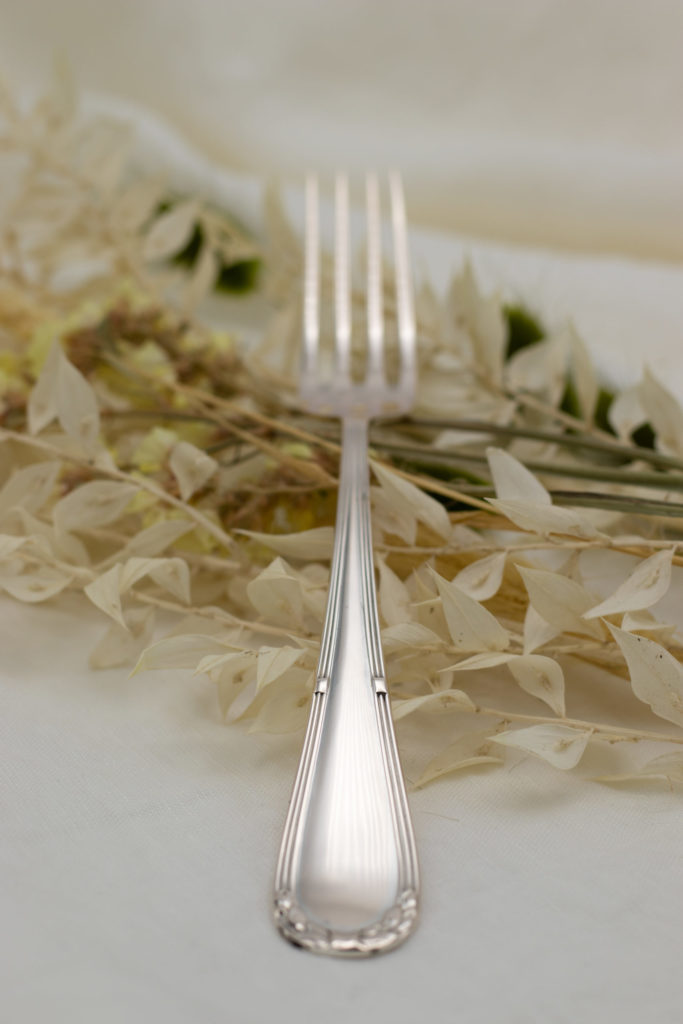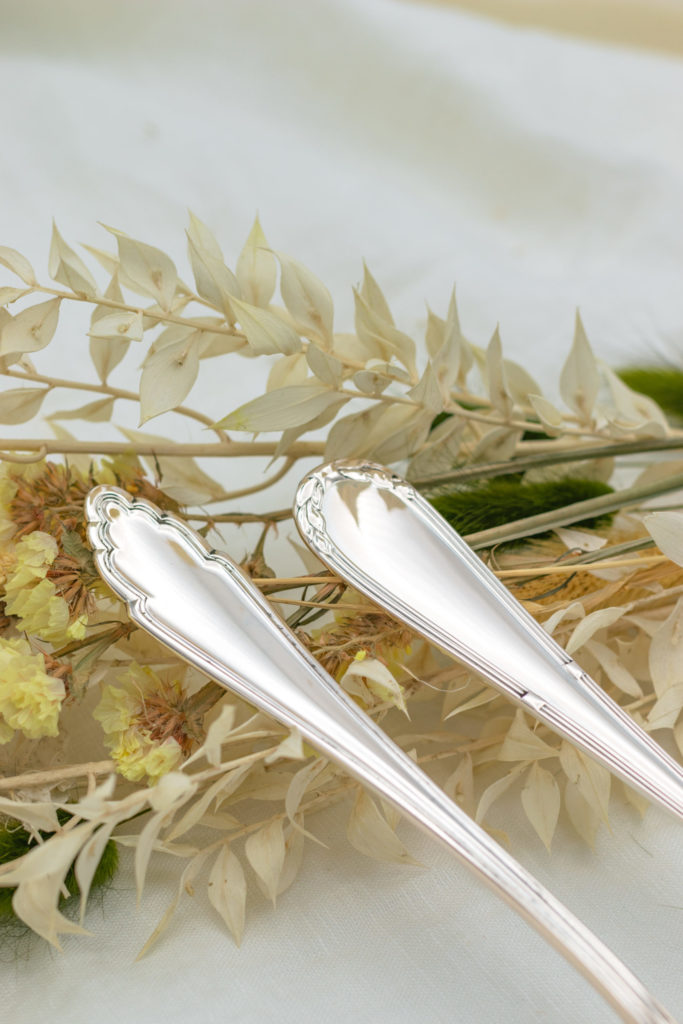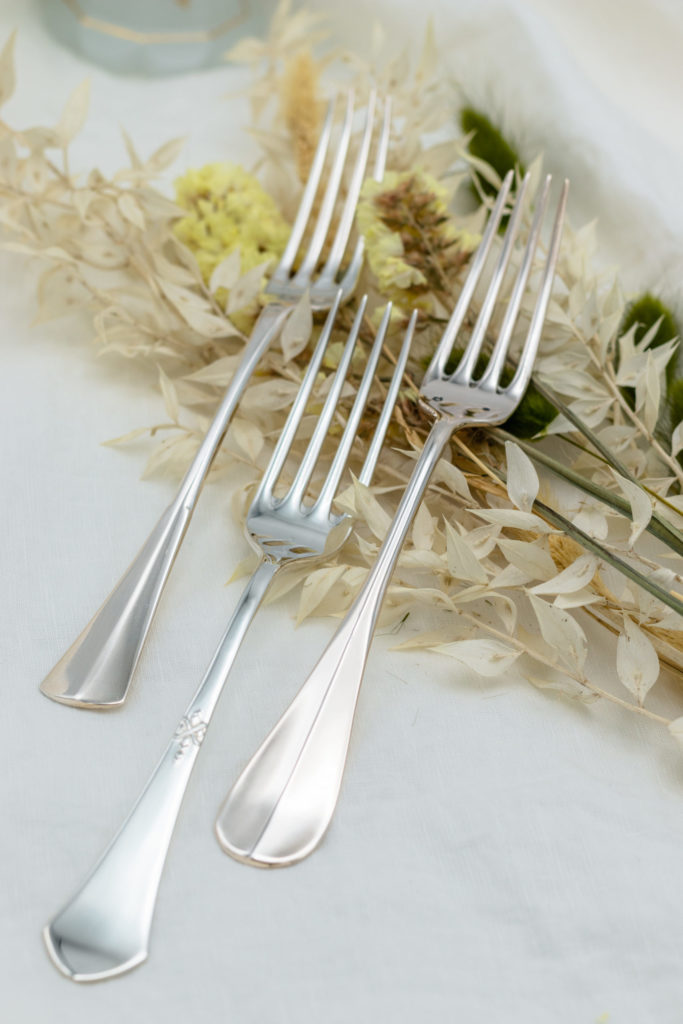Why Invest in Antique Silver Flatware – 5 Reasons
With the revival of table culture, silver flatware is also enjoying great popularity again. In today’s article you will learn a brief history of silverware and table silver, the advantages of the material and why it is ideal as a gift.
For those in a hurry, there is a brief summary of the main selling points at the end of the article – in the spirit of #TooLongDidntRead !
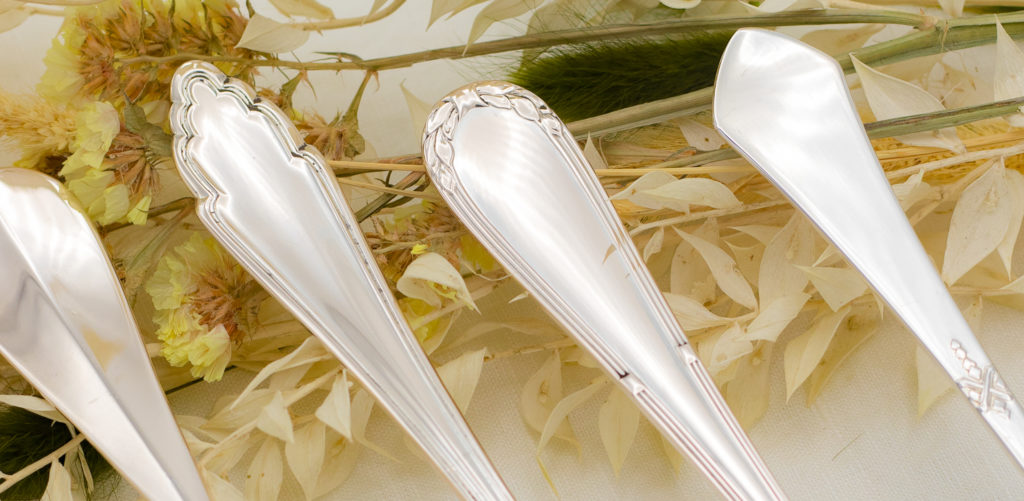
The Beginnings of Silver in Table Culture
The history of silver in table culture begins in the 16th century, where silver flatware first appeared. In the late 17th and 18th centuries, silver gained popularity, particularly as cutlery and crockery in noble houses. In Austria, this development reached its first peak in the Biedermeier period (1815-1848).
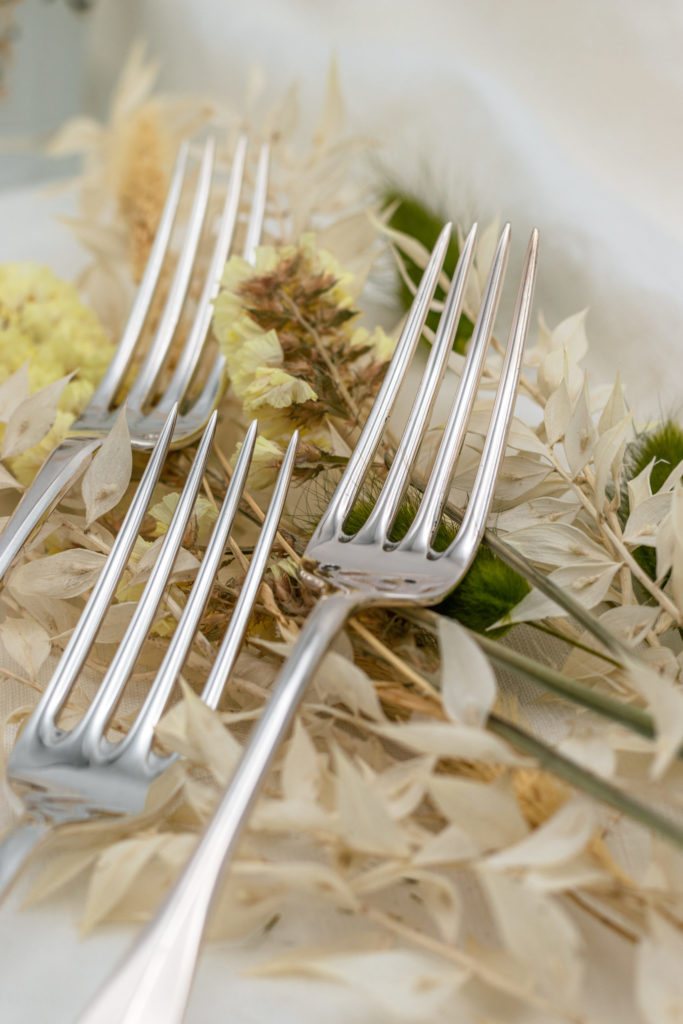
One reason for the popularity of this precious metal is, amongst others, its antibacterial – more precisely oligodynamic – properties: This refers to the ability of silver to render microorganisms such as mold, fungi, viruses and algae harmless. Due to this antibacterial and disinfecting function, silver is considered extremely hygienic. It is therefore hardly surprising that it gained such importance in the high table culture of the 18th and 19th century.
The flourishing of silver cutlery and table silver was accompanied by the rise of elegant food culture, also known as “fine dining”. The French elite of the late 17th and 18th century was fond of staging ceremonial, multi-course meals served on the finest silver. At that time “the more, the better” was the principle. In addition to cutlery, plates, sugar bowls, centerpieces, trays and candlesticks with one or more arms made of silver were a must if you wanted to leave your guest with the impression of wealth and status.
Silversmiths in Vienna
In Vienna alone there were numerous silver manufacturers, including Vinzenz Carl Dub and Josef Carl Klinkosch located at “Michaelerplatz”, in close proximity to the Hofburg. Today, Jarosinski & Vaugoin in Vienna is one of the last remaining traditional companies that still manufacture silver cutlery using both old and newly developed designs. High-quality cutlery was also made in former crown lands such as Hungary and the Czech Republic, although the respective silversmiths in these regions are difficult to identify without archival research.
Hallmarks not only guarantee the fineness of the silver, but also enable the chronological and local allocation of the products. In Austria-Hungary between 1807 and 1867 official hallmarks with slight deviations in shape and changing dates were in use. In 1867 the so-called “Diana Head” or “Woman Head” (and a “Greyhound” for smaller silver objects) was introduced in all the regions of the Habsburg monarchy for the purpose of standardisation; in Austria it was replaced in 1922 by new hallmarks like the “Toucan Head” (for 800 silver). The k.k. Hardware Factory J.C. Klinkosch can not only be recognised by its master’s mark (JCK), but also by the additionally hallmarked knight’s helmet, which the company liked to use after Josef Carl von Klinkosch was elevated to knighthood.
Caring for and polishing silver made easy
At that time, aristocratic and bourgeois families had servants who were responsible for the shine of the silver. Traditionally, silver was cleaned using hot water and a gentle soap before being dried and polished with a soft cloth. For storage, the silver was wrapped in a soft fabric or placed in specially made boxes made of hardwood, veneered with fine woods or covered with leather; the drawers and inserts were traditionally lined with deerskin.
In addition to this traditional method, there are various products available on the market today that make silver cleaning easier, including those from the Hagerty company. It is important to note however that the best way to care for your silver is regular use! Thus, there is nothing to fear when it comes to cleaning your silver! For some it evokes nostalgic memories of childhood and revives family traditions, while others see it as a meditative practice to escape the stresses of everyday life – with brilliant results to behold!
Should professional help be in need after all, we offer the service of mechanical polishing!
Flatware designs
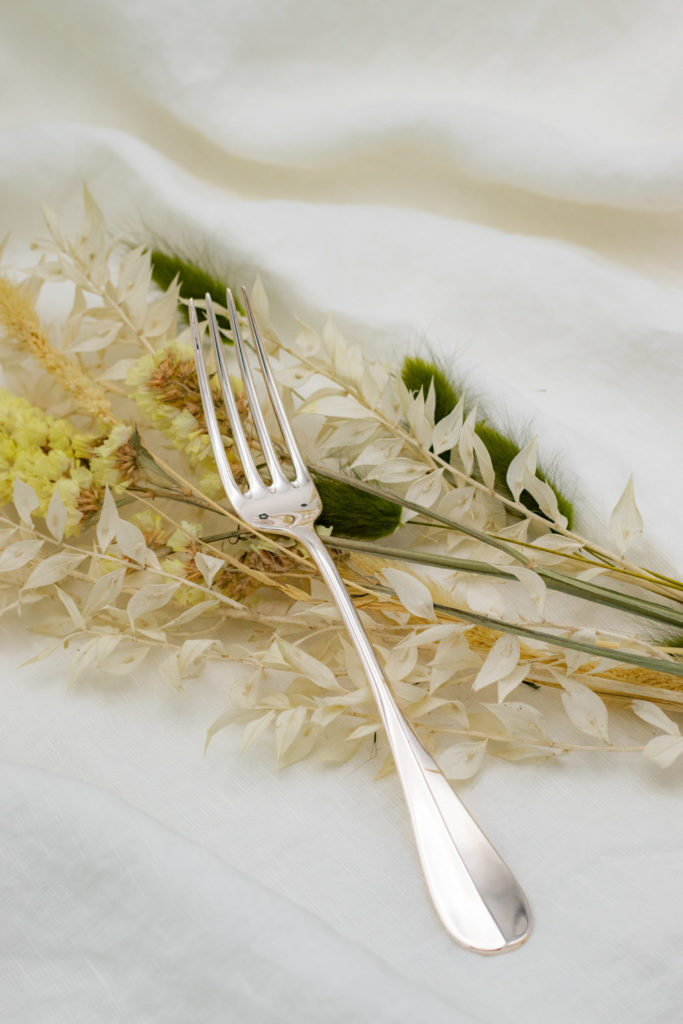
Classic and common forms of silver cutlery are the “Augsburger Faden”, “Geigenkasten”, “Spaten” and “Eselsrücken”. But there are also very lavishly decorated designs, as this 18-piece French cutlery by Lappara & Gabriel shows. Hundreds of cutlery shapes have developed over the centuries, so it’s not difficult to find the right one for every taste, style and occasion.
Silver cutlery today – our clientele
Before the industrial revolution, only the nobility could afford silver cutlery and silverware, but industrial production made silver flatware affordable for the upper classes too, who followed the customs and traditions of noble table culture. Popular as family heirlooms, silverware was often passed down from generation to generation unless a financial crisis necessitated the sale of the family silver.
Even today, silverware – especially complete sets of cutlery with many serving and dining parts in their original canteens – are extremely popular and often given as gifts for occasions such as baptisms, weddings, birthdays, graduations or anniversaries (“silver weddings”). Sometimes these are personalised beforehand with initials, coats of arms or ornaments on the cutlery or in the lid of the canteen. If the engraving of silver cutlery is not quite to your taste, solid silver also allows unwanted engraved elements to be removed. We are happy to carry out all these services for you.
#TLDR – 5 reasons you should invest in an antique silver cutlery set
- Rarity and Exclusivity – Complete sets, especially for 12 or more people, are becoming increasingly rare and are often only found in very bad condition. We take care of a substance-preserving restoration, offering investment items that are not only decorative, but also serve daily use.
- Values for generations – Then as now, silver cutlery is a valuable family heirloom that, with sufficient care, can bring joy and benefit over generations.
- Hygiene – The reason for the popularity of the precious metal silver is in part due to its antibacterial properties, i.e. the ability of silver to render microorganisms such as mold, fungi, viruses and algae harmless.
- Exceptional gifts – The possibility of having silver cutlery engraved (coats of arms, initials, etc.) means an individual, personal customisation.
- The best way to care for your silver is to use it regularly – silver cutlery is not only a pleasure to behold on every table but also something practical, so use it daily if possible!
